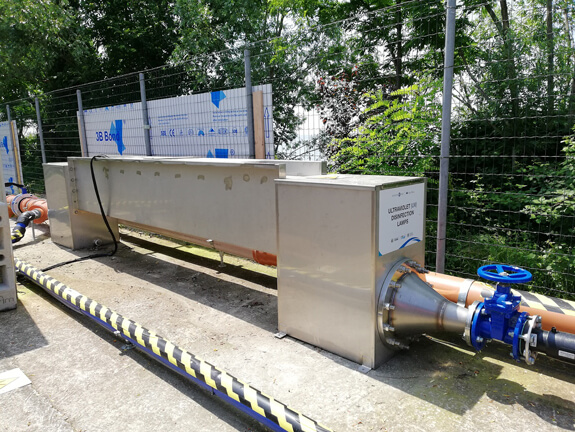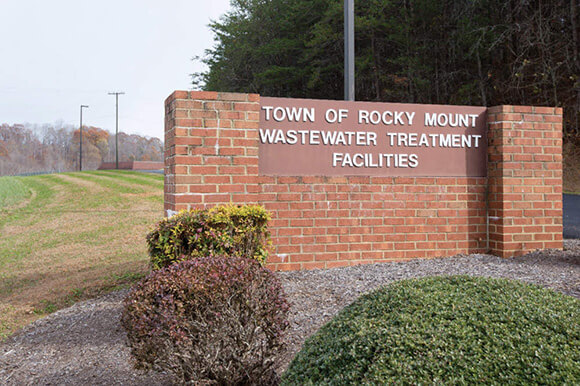Lake Garda, Italy: INTCATCH Program Protects Against Combined Sewer Overflows
Year after year, the world is seeing more frequent extreme weather events, whether it is droughts, extreme temperatures, floods, or severe storms. These weather events can have immediate and undesirable impacts on water treatment facilities and the health of receiving water bodies.
For wastewater treatment plants, large amounts of rainfall or snowmelt can outpace peak flow capacities resulting in sewer overflow, where untreated (or partially untreated) wastewater is discharged, polluting receiving waters. In combined sewer systems, overflows contain not only human waste, but industrial and toxic waste.
Combating Pollution Caused by Combined Sewer Overflows
The pollution caused by combined sewer overflows (CSOs) is becoming a priority concern for countries around the globe. Enter INTCATCH, a Horizon 2020 program funded by the European Union and led by Brunel University in collaboration with 20 partner organizations across seven countries. The team is installing CSO treatment systems along with state-of-the-art monitoring tools that can measure water quality in real-time. The vision is to build the program so that any city or town can use these systems and tools to uncover how best to improve the health of their water source affected by CSOs.

Demonstrating INTCATCH in Villa Bagatta, Italy
Villa Bagatta, Italy, lies on the coast of beautiful Lago di Garda (Lake Garda) and is home to one of five INTCATCH demonstration sites, with other sites located in the UK, Greece and Spain. Lake Garda is the largest lake in Italy and a very popular tourist destination. They currently have 22 pumping stations and gravity CSO channels and 10 submerged CSO tunnels, which were designed years ago when there were fewer peak flow events. Now, with more frequent wet weather, Lake Garda is at risk of high pollution from CSOs.

Lake Garda is the largest lake in Italy.
INTCATCH began building Villa Bagatta’s demonstration site in January 2018, when they installed the CSO treatment system comprised of a Salsnes Filter rotating belt filter system, a granular activated carbon filter and a TrojanUV3000®PTP system. From January to October, CSOs were simulated using different combinations of raw wastewater and water from Lake Garda and put through the system. Now and until the demonstration ends in the year 2020, real CSO events are being treated by the system.

The demonstration site in Villa Bagatta, Italy: a Salsnes Filter rotating belt filter left in blue container, granular activated carbon filters center, and a TrojanUV3000PTP UV system far right.
Rotating Belt Filter & UV Treatment Technology
The Salsnes Filter system is housed in a 20 foot container. Inside, a SF1000 filter (with 90 micron filtermesh), polymer station, mixer and Control Power Panel treat flows up to 50m³/h, removing, on average, 39% of suspended solids. The SF1000 performs solids separation and then transports solids to its integrated sludge thickening stage after which sludge is dropped into a collection area. The Air Knife automatic cleaning system uses compressed air to remove any remaining sludge from the filter as it rotates.

The Salsnes Filter system is housed in a 20 foot container and removes, on average, 39% of suspended solids from incoming flows.
The TrojanUV3000PTP UV system is the final treatment step, inactivating microorganisms before discharging into Lake Garda. UV treatment is a physical process that instantaneously neutralizes microorganisms as they pass by UV lamps submerged in the effluent. The process adds nothing to the water but UV light, and therefore, has no impact on the chemical composition or the dissolved oxygen content of the water.

The TrojanUV3000PTP UV system is the final treatment step, inactivating microorganisms before discharging into Lake Garda.
Monitoring Water Quality in Real-time
A number of monitoring tools are in place to show the efficiency of treatment equipment and its effect on lake water quality, including levels of solids/turbidity, pH, heavy metals and E.Coli. Remote-controlled boats and fixed sensors test the water in real-time and are linked to a decision support system (DSS) that helps improve day-to-day decisions about where, when and how to best help the lake.

Remote-controlled boats test Lake Garda’s water quality in real-time.
The Future of INTCATCH
The INTCATCH program, using well-known and proven treatment technologies, combined with ultramodern monitoring tools, has the potential to help communities around the world reduce pollution caused by CSOs and improve the health of their water bodies.
Once the Villa Bagatta demonstration ends in the year 2020, INTCATCH’s mission will be just that – to find other communities that could benefit from the innovative program they’ve built.
Featured Posts
IntensiCarb wins Bronze Project Innovation Award during the IWA World Water Congress & Exhibition
This solids intensification technology enables more than quadrupling anaerobic treatment capacity within existing infrastructure. LONDON, ONTARIO, August 16, 2024 —Trojan Technologies is proud to announce that IntensiCarb™ has been honored with the prestigious...
Ensuring Safety and Quality in Food Contact Materials (FCM): Understanding the European Framework Regulation (EC) 1935/2004
The European Framework Regulation (EC) 1935/2004 is a major regulation governing the safety and quality standards of the food and beverage industry. It ensures that all food contact materials (FCM) are safe and compliant with European Union (EU) legislation. In this...
Achieving High-Purity Water for Microelectronics: Sustainable Solutions with Aquafine Technology
As we rapidly progress towards a more technologically dependent world backed by AI advancements, progressive medical devices, and automation, the demand for microelectronics has been increasing rapidly too. The unique nature of microelectronics fabrication processes...







